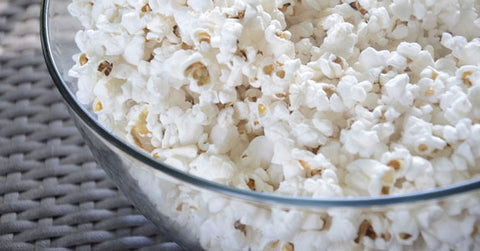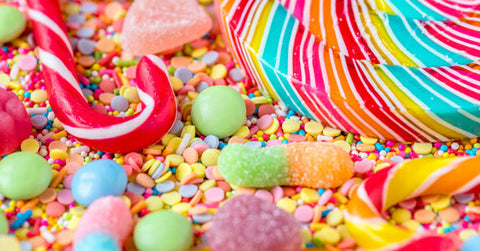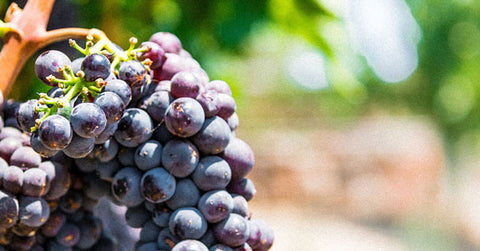Everyone who has spent any time around an infant, toddler, or preschool-aged child knows that his or her favorite thing to do is to pick things up and put them in their mouth. This behavior is absolutely part of normal development for this age.
The first stage is the oral-sensory stage from birth to 12 months. For the first 6 months, life is pretty much about eating and sleeping, (and pooping!), while the most prominent activities during the second 6 months are teething and biting.
As a pediatric ENT, I have spent years as a highly skilled “plumber”, one that removes foreign objects from the ear canals, nose and rarely, but potentially life threatening, from inside the windpipe (trachea).
When any object is “aspirated”, enters the trachea through the voice box, or falls even further down into the large branch on either side (main bronchus), this is incredibly serious and requires an immediate visit to a pediatric emergency room at a children’s hospital when possible. The object must be removed surgically under anesthesia as soon as possible by an ENT or pediatric ENT.
Parents should know that anytime an infant, toddler or child chokes on food or objects, and has coughing, excessive choking, or turns red or blue, these episodes may result in a possible aspiration.
If foreign objects are swallowed, as long as they are not sharp, a coin, a battery or a magnet, most of the time objects should pass through the intestines and come out in the poop. Both pediatric ENT and GI specialists often remove coins that when swallowed, are often stuck in the upper most part of the esophagus right below the natural upper esophageal sphincter (so it “holds” the coin there).
Understanding the symptoms and the urgency for a correct diagnosis and treatment to remove the objects is important, but nothing is more important than parents and caretakers being aware of the dangers and vigilant in preventing episodes in the first place.
If you ever get to sit next to me on a flight, and we (or really, I) strike up a conversation (which is almost always unless you slept the entire flight or avoid eye contact with me), I will likely tell you all about the top food and nonfood choking items for kids. If you are holding an infant in your lap during this flight, I am afraid you may get an entire lesson from me about how to prevent choking hazards, sometime between my telling you how cute your baby is, then how cute my Claire is, and before we land!
WHY BABIES MAY CHOKE
Before I list the major choking hazards, I want to explain why babies choke/cough and may aspirate.
The first molars (large teeth in the back of the jaw) do not even come in until age 3. Imagine your child eating a peanut (they shouldn’t eat nuts until closer to kindergarten age) and without molars to chew such a hard and crunchy item, it's difficult for your child to “mushed it up” before swallowing. What can happen is that the sharp edges from nut chunks, even after initial chewing, will likely be difficult for the young child to handle during swallowing, leading to choking, coughing, and then the risk of aspiration.
In order to cough, humans close their vocal cords, build up lots of pressure from inside the windpipe, then the diaphragm muscle contracts, and suddenly the vocal cords open and air is violently expelled and rushed out of the windpipe at up to 25-35 miles per hour. This is a great design for human survival and safety so that whatever is trying to get into the windpipe (other than air) is removed and “coughed” out, avoiding stuff getting into a one-way system with no outlet.
Anytime a person coughs, right after the big violent expelling of air, the body immediately follows with a huge breath of air going back in or “inspiration”. That can only happen when the vocal cords or gateway/doors of the windpipe are wide open! As air is now rushing in quickly to fill the lungs, whatever piece of object or food small enough to be carried by that force of airflow can get “sucked” into the windpipe.
TOP 7 CHOKING HAZARDS: FOOD ITEMS FOR CHILDREN
1. MIXED NUTS
Avoid offering any peanuts, tree nuts, cashews, hazelnuts, and so on to a child under the age of 5 or 6. Nuts require good and thorough chewing, and toddlers and preschool-aged children may not do a good enough job.
I have met some mothers who tell me they routinely give their toddlers nuts and the kids do fine. It’s up to you if you want to take that chance but I would not.
Once aspirated into the airway, nuts are perhaps the worst items for ENTs to remove because over minutes and hours, they absorb the natural secretions from the body and expand. The oils from the nuts are released causing more inflammation. By the time we get to the operating room and I am trying to get it out, the nut half crumbles and it’s a nightmare to get out every tiny piece. If we don’t remove it all, pneumonia is very likely.
In this day and age of so many kids with peanut and tree nut allergies, it’s simply better to avoid it all together.
2. POPCORN
This is especially hazardous for children who have older siblings. It’s seems harmless—it's definitely is easy to microwave a bag of popcorn, and as everyone is enjoying it, so is the youngest child.
Un-popped corn kernels are round and hard, and just perfect to be aspirated into the airway. The hard and irregular edges and texture of popcorn, before being thoroughly chewed, is definitely a hazard.
I did not give Claire any popcorn until about age 5, and remember calling her preschool to discuss this concern when she came home with “popcorn art."
If you must give a child popcorn, then be diligent and pick out every un-popped kernel before serving it. If anyone has a method or microwave recommendations to get every kernel popped without burning some of the popcorn, please share!

3. HOTDOGS
Likely the most common cause of choking related death in children.
I had a case, during my fellowship training in Chicago, of a 5-year old whose grandmother was serving him a hotdog (his favorite lunch) except he was holding it length wise, bun-less and eating it whole.
One large chunk got stuck behind his huge tonsils against the back wall of the throat. He could not spit it out nor swallow it (it was not even chewed yet). What a scary case! Thank goodness he was able to get air in and get to the children’s hospital.
My team and I had him asleep safely under anesthesia, fully prepared for an emergency airway situation. Once asleep with some IV medications, I immediately opened his mouth and shoved the large chunk of hotdog up towards the center of the head away from his voice box/airway, then intubated him (put a tube into the trachea through the vocal cords) to protect his airway. Once the airway was safe, I was able to wrestle out the chunk of hotdog from his nasopharynx. If you are feeling your heart rate go up while reading this, you are definitely sharing our stress level that day.
Please remember to always cut the hotdog length wise, even quartered lengthwise, and then into tiny chunks.
In our house, hotdogs are considered an emergency food item simply due to its ingredients and my commitment to avoid nitrites in our diet. I must confess in my younger years I loved the $1.50 Costco hotdog/drink combo, but it is so unhealthy, although a symbol of patriotism. I hope your child rarely eats it.
For more information on eating go to www.drjuliewei.com.
4. HARD CANDIES OF ANY KIND (AND SOME GUMMY CANDIES)
M&M’s with peanuts/almonds/any nuts, lemon heads, gum balls, round hard mints, and pretty much ANY hard candy are a choking hazard.
If it does not dissolve quickly once it hits saliva, don’t give it to your child.
Children love “gummy” candy of any kind, and now there are all these fruit snacks available. Again, I don’t have a magic age so you must use your best judgement.
In 2001, the FDA banned the import of the famous jelly fruit candies after linking them to choking deaths in kids.
It’s not just hard candies that can cause choking hazards, but gummy and gelatinous food items shaped just large enough to swallow as a whole and cause airway obstruction or choking should also be avoided. Imagine your little one, who lacks molars, running around playing and yelling at siblings with hard candies or gummy chunks in their mouth!

5. RAW VEGETABLES
I share in A Healthier Wei that growing up in Taiwan, we never ate raw vegetables. Asians believe in warm foods helping with digestion, while cold foods decrease blood flow to the digestive track since blood vessels constrict. So, I never ate a raw cucumber slices, carrots, broccoli, or knew the word crudité until I was 10 and we immigrated to the U.S. Only during my college years being away from home was I exposed to “salads”.
I have removed chunks of raw carrots from the windpipe of a toddler. I am not trying to change the well accepted Western culture and love of salads and raw vegetables, except to tell you that for the same reasons discussed above, chunks of hard carrots, and bits of broccoli are simply too hard for toddlers to handle. I even tell moms to make sure apple slices are thin, else your kid may choke on them all the same due to the harder texture.
I am a huge fan of cooked vegetables so that they become soft. You don’t see Gerber making small containers of raw vegetable and selling them as stage 2 or 3 foods for a reason.
Remember that ranch dressing is not a good enough reason to serve your toddlers hard crunchy veggies (Claire could probably drink ranch dressing from a bottle...).
6. ROUND SPHERICAL FOODS
Most moms now know to cut grapes into at least halves, if not quarters, for obvious reasons. Small blueberries are probably okay for toddlers since they’re usually pretty soft upon the first chew.

7. EDEMAME, SOYBEANS AND BEANS
My fellowship director showed me pictures and shared with me a story from years ago in Chicago when he saved a child who fell into the soybean silo on the farm, and “drowned” in soybeans. He had to remove several soybeans from the airway.
Imagine these soybeans expanding as they absorbed the natural moisture in the windpipe, and again, suffocating the child by blocking his/her airway.
While we all love edamame, again due to its texture/shape, it's not good to give to younger children despite its great nutrition profile.
I have a “story” or case for just about anything, so the key is that even if a food item is not on this list, you must use your judgement.
Years ago, a 10-month old baby came into our emergency department with a history of noisy breathing for almost a week and decreased eating/drinking. When I took him to the operating room and did a bronchoscopy (rigid tube/camera) to look into his airway, there was nothing there but a weird bulge from the back wall of the trachea (the muscular parting wall that separates the trachea from the esophagus), so I did an esophagoscopy.
Wow, I spent the next 30 minutes removing ground beef, pieces of chicken with cartilage on it, popcorn pieces, and all that had been stuck in the esophagus since this baby can’t possibly handle these foods.
I have learned through my career that even though I may assume it is common sense to all adults not to feed a child certain items at a certain age, real life is such that caretakers may offer all kinds of foods without realizing the risk of choking hazards. The children may also feed themselves if they are able to reach them. I can imagine that when a family has multiple children, it is hard to deny the youngest any of the items everyone else is enjoying.
Eat well, talk to your children about choking hazards, teach them to eat mindfully while sitting, and teach them NOT to put objects in their ear canals or nostrils, and never put anything that’s not food in their mouths!
You can read more about stages of development in the Erikson’s Stages of Psychosocial Development.

Insightful. However, I’m confused where you say that children don’t get their first molars until they are age three. My son is 2.5 and has two molars on the top and two on the bottom.